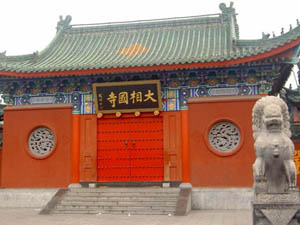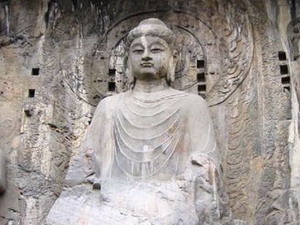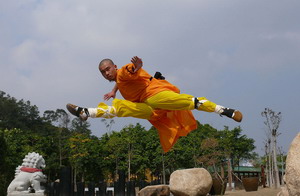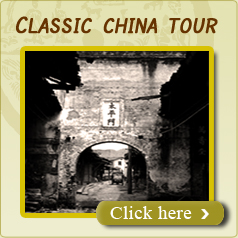Xiangguo Temple

The Xiangguo Temple (Xiangguo si) has had one of the most turbulent histories in China, having been destroyed, rebuilt, sacked, renovated and commercialized beyond recognition. The temple was first built in 555 AD, during the Northern Qi Dynasty (550-577 AD), when Chinese Buddhism was at one of its peaks in history. Since then, the temple has had its ups and downs, in close relation to the fortunes of the city that surrounds it. It first constructed in 555 in the Northern Qi (550-557) of Northern and Southern Dynasties,
The temple developed its role as one of the main Buddhist centers in China during the Tang Dynasty (618-907 AD), when the temple was bestowed with its present name by the emperor of the day. But true greatness here was found during the beginning of the Song Dynasty (960-1279 AD): as Kaifeng became the capital, so the temple grew to its largest size, with expansion and renovation. It was during this time that the temple was home to over 1000 monks and 64 Buddhist colleges. It became an international Buddhism center, attracting many foreign envoys and great monks. It contributed a lot to the cultural exchanges between China and other countries.
Coming here, you will be surprised at the magnificent architecture and the well-arranged layout of the temple. The existing structures were mainly built in the Qing Dynasty (1644-1911). The buildings include Mountain Gate, Paifang, Heavenly Kings Hall, Daxiongbaodian Hall (Hall of Sakyamuni), Arhat Hall and Sutra Hall. They are set on the north-south central axis with some other annexes built symmetrically on both sides.
Nowadays the temple resembles the rebuilding that was made during the Qing Dynasty, 1976, although restoration has taken place many times since then. The temple has also been affected by modern commercialism, and the entertainments center in the front courtyard is the worst of this.
The temple is certainly still worth visiting though, with some interesting Buddhist articles hidden about including a beautiful Song Dynasty (960-1279 AD) bronze Buddha in the Great Treasure House (Daxiong baodian), a 3 meter high gold leaf statue of Guanyin, Goddess of Mercy, in the final octagonal hall, and an old cast iron bell within the Bell tower
In addition, the temple holds annual activities like lantern exhibitions on the Lantern Festival, chrysanthemum exhibitions and the great prayer festival of water and land. On the occasion, pilgrims from home and abroad will assemble here to celebrate the holidays.





